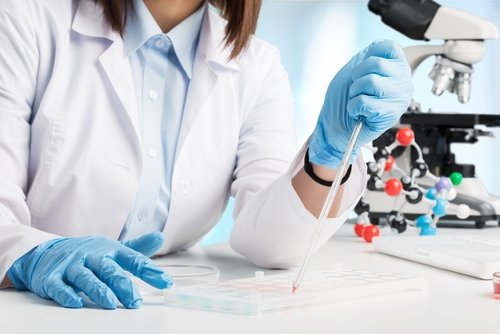Genetic characterization and the detection of PD-1 ligand protein (PD-L1) levels in non-small cell lung cancers (NSCLC) can help oncologists identify those who may benefit the most from Opdivo (nivolumab) as a first line of treatment before starting therapy, according to a Phase 3 clinical trial.
The results of the trial were featured in a study titled “First-Line Nivolumab in Stage IV or Recurrent Non-Small-Cell Lung Cancer,” published in The New England Journal of Medicine.
Cancer cells often express PD-L1 protein on their surface — a cancer cell biomarker that can bind to its receptor PD-1 that is expressed by immune T-cells. When this happens, the immune cells are blocked and can’t attack the cancer cells.
Taking advantage of immunotherapy drugs like Opdivo, which was designed to inhibit the PD-1 receptor and prevent it from binding to PD-L1, it becomes possible to boost the activity of immune cells to recognize malignancies and attack cancer cells.
The Phase 3 CheckMate 026 trial (NCT02041533) compared the effectiveness of Bristol-Myers Squibb’s anti-PD-1 antibody Opdivo with standard-of-care chemotherapy regimens for treatment of patients with advanced untreated or recurrent NSCLC positive for PD-L1 expression.
A total of 541 patients were included in the trial, of whom 418 had more than 5 percent of tumor cells expressing PD-L1, and 214 patients had more than 50 percent of their tumor cells expressing PD-L1. The patients were randomized to receive either Opdivo or physician’s choice of chemotherapy — Gemzar (gemcitabine); Platinol (cisplatin); Taxol (paraplatin); or Alimta (paclitaxel).
About 60 percent of the patients treated with chemotherapy ended up being treated with Opdivo due to disease progression.
Overall, the researcher observed that Opdivo did not improve progression-free survival compared with standard chemotherapy regimens. Indeed, patients who received chemotherapy showed a better response rate (33.5 percent) than those in the Opdivo arm (26.1 percent). However, the median duration of response was only 5.7 months with chemotherapy compared to 12.1 months with Opdivo.
Interestingly, a detailed analysis of treatment response in the subgroup of patients who had tumors with higher levels of PD-L1 (more than 50 percent) and high tumor mutation burden showed a greater benefit with Opdivo therapy.
“The good news is that we discovered that a subset of patients who had both high tumor mutation burden and high PD-L1 positive status did experience a significant benefit from immunotherapy,” David Carbone, MD, PhD, said in a press release. Carbone is a professor at the Ohio State University Comprehensive Cancer — James Cancer Hospital and Solove Research Institute, and lead author of the study.
Indeed, 75 percent of the patients in this subgroup responded to treatment compared to only 16 percent of the patients who received immunotherapy, but had low mutation burden and low PD-L1. These two subgroups of patients presented the same response rate when treated with standard chemotherapies. These results highlight the importance of these biomarkers in immunotherapy efficacy.
“This study is an important step toward understanding the impact of tumor mutation burden and PD-L1 in immunotherapy response. This data shows we should evaluate these two factors independently to most accurately define who will benefit from immunotherapy,” Carbone said.


